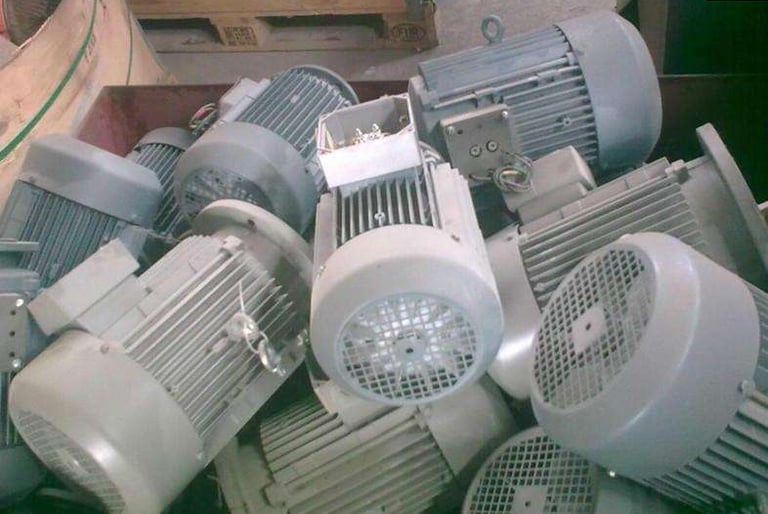Reclaim,Reinvent,Recycle Call us today Whatsapp:+86 18738158809 Email address: dahlia@dahliamachine.com
Main Application Areas of Motor Stator Separation Equipment
Main Application Areas of Motor Stator Separation Equipment can be from automotive to manufacturing, appliances, and renewable energy. Its applications span from recycling and maintenance to production quality control.
1/9/20253 min read
Motor stator separation equipment has emerged as a crucial technological asset in various industries.
With the increasing demand for efficient motor recycling, maintenance, and production processes,
these specialized devices have found extensive applications.
Primary sectors of motor stator separation equipment
Electric Vehicle Industry
1.Battery Electric Vehicles (BEVs)
In the booming BEV sector, motors are at the heart of the propulsion system. As the market for BEVs expands rapidly, so does the need for efficient stator separation. When it comes to end-of-life vehicles or faulty motors during production or warranty periods, stator separation equipment allows for the retrieval of valuable components. The recovered copper windings can be recycled, reducing the demand for virgin materials and lowering the overall environmental footprint of BEV manufacturing. Moreover, the refurbished stator cores can potentially be reused in remanufactured motors, contributing to cost savings and resource conservation.
2.Hybrid Electric Vehicles (HEVs)
HEVs incorporate both internal combustion engines and electric motors. The electric motors in HEVs often require maintenance or replacement over time. Motor stator separation equipment provides a means to disassemble the stator components precisely. This is essential for diagnosing faults, replacing damaged windings, or upgrading the motor's performance. By facilitating quick and accurate stator separation, the equipment helps keep HEVs running smoothly and extends their service life.
Industrial Motor Manufacturing and Maintenance
1.Large-Scale Industrial Motors
In factories and industrial plants, large motors power heavy machinery. These motors are
subject to wear and tear, and periodic maintenance is crucial. Stator separation equipment
enables technicians to access the internal components of the stator, such as the windings
and laminations. This allows for the replacement of faulty parts, rewinding of coils, and overall
refurbishment. By ensuring the continued operation of these industrial motors, production
downtime is minimized, and productivity is maintained.
2.Small and Medium-Sized Industrial Motors
SMEs in various manufacturing sectors rely on a multitude of small and medium-sized motors. When these motors malfunction, stator separation equipment offers a cost-effective solution. Instead of replacing the entire motor, which can be expensive, the equipment allows for the isolation and repair of specific stator issues. This not only saves on replacement costs but also reduces waste, as the repairable components are salvaged and reused.
Appliance Manufacturing and Recycling
1.Home Appliances
Household appliances like washing machines, refrigerators, and air conditioners all contain motors. At the end of their life cycle, these appliances are typically recycled. Motor stator separation equipment comes into play by efficiently extracting the copper and iron components from the stator. The recovered materials can then be fed back into the manufacturing supply chain, closing the loop of resource utilization. In appliance manufacturing plants, the equipment can also be used to correct any stator assembly errors during production, ensuring the quality of the final products.
2.Commercial Appliances
Similar to home appliances, commercial appliances such as industrial refrigeration units, large laundry machines, and HVAC systems for commercial buildings also rely on motors. The stator separation equipment helps in both the maintenance and recycling of these motors. In maintenance, it enables quick disassembly for repairs, while in recycling, it maximizes the value of the recovered materials, aligning with the growing trend of sustainable business practices.
Renewable Energy Sector
1.Wind Turbine Generators
Wind turbines generate electricity on a large scale, and their generators contain powerful motors. Over time, these motors may require maintenance or replacement. Stator separation equipment is used to access the stator components, allowing for repairs, upgrades, or replacement of faulty windings. This is critical for ensuring the continuous operation of wind farms and maximizing the energy output.
2.Solar Tracking Systems
In solar tracking systems, motors are used to adjust the position of solar panels to optimize sunlight capture. These motors need to function reliably in harsh outdoor environments. When issues arise, stator separation equipment helps technicians diagnose and fix problems quickly. By maintaining the motors in good working condition, the efficiency of solar tracking systems is enhanced, contributing to greater solar energy conversion.
Conclusion
Motor stator separation equipment has permeated multiple industries, from automotive to manufacturing, appliances, and renewable energy. Its applications span from recycling and maintenance to production quality control. As technology advances and environmental concerns grow, the importance of these devices will continue to increase, driving further innovation and improvement in the field.
For more information or best offer,Please kindly directly call us or talk to whatsapp: +86 18738158809
Email: dahlia@dahliamachine.com
Website: https://dahliamachine.com



Address
451000,Sanquan RD,Jinshui District,Zhengzhou City, P.R.C
Contacts
Tel/Whatsapp:+86 1873 8158 809
Email: dahlia@dahliamachine.com


